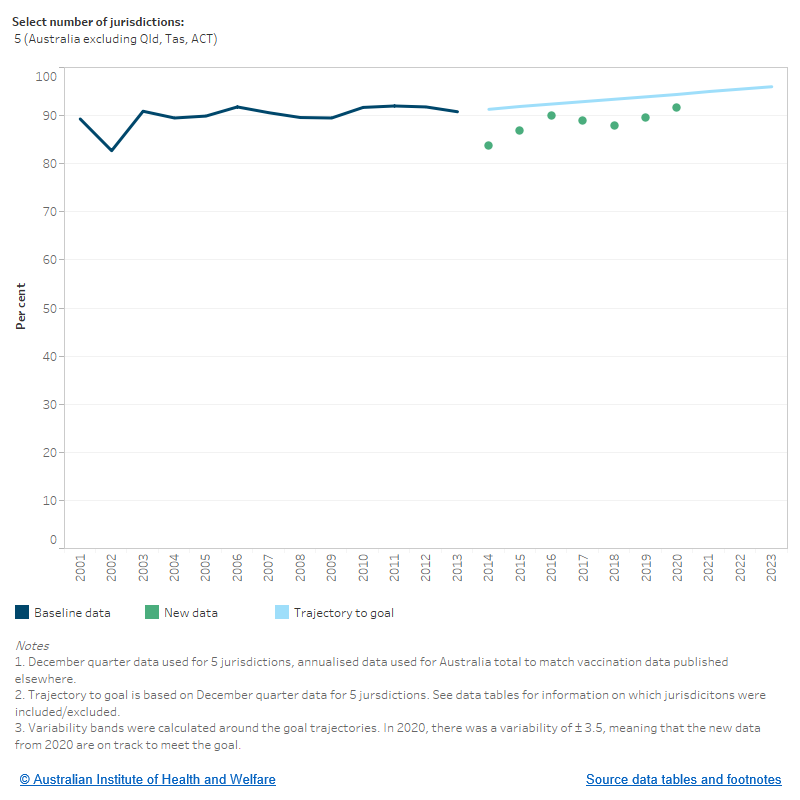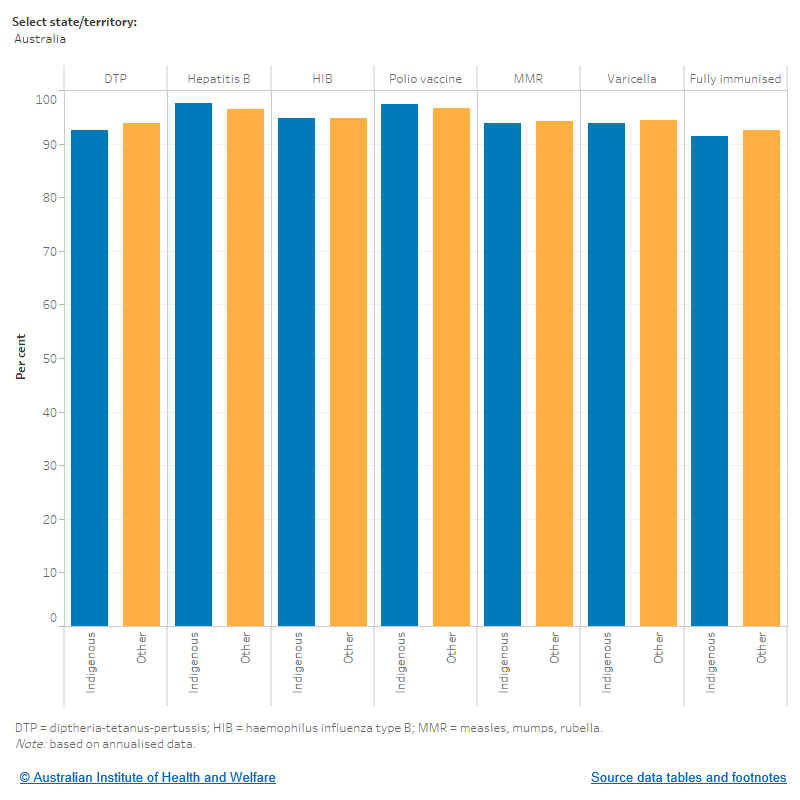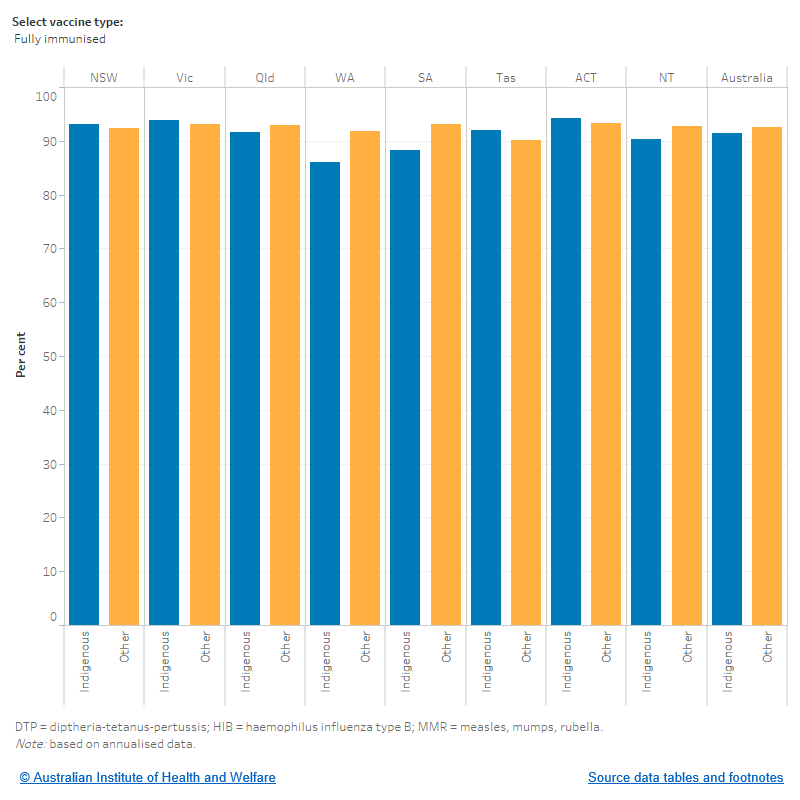Goal 6: Fully immunised – children aged 2
This indicator reports on the proportion of Aboriginal and Torres Strait Islander children aged 2 who are fully immunised. The goal for this indicator is 96% by 2023.
Why is it important?
Immunisation is important in protecting children from harmful infectious diseases. The National Immunisation Program Schedule sets out which vaccines should be provided at which ages, including for children aged 2.
What data are available?
Data for this indicator were sourced from the Australian Immunisation Register. The reported data for this indicator are for children aged 24 to <27 months as at 30 September. December quarter data from 5 jurisdictions – New South Wales, Victoria, Western Australia, South Australia and the Northern Territory – were used to inform goal setting due to data availability when the goals were set. Annualised national data were available from 2003 and are also presented.
What do the data show?
Progress towards the goal is on track.
- In the 5 jurisdictions, the proportion of Indigenous Australian children aged 2 who were fully immunised at 31 December 2020 was 92%, slightly below the trajectory point of 94% to meet the goal. However, taking into account error associated with the data, the goal can be considered on track.
In the combined 5 jurisdictions, as at 31 December in each year:
- From 2001 to 2013, the coverage rates for Indigenous Australian children aged 2 who were fully immunised fluctuated between 83–92%.
- The rate decreased from 91% in 2013 to 84% in 2014 – this can be attributed to the introduction of additional vaccines in the definition of fully immunised for children aged 2 in December 2014.
- The criteria to be assessed as fully immunised was again amended in 2017 to include additional vaccines for children aged 2, causing another drop in coverage rates in that year. It is expected that the drop in coverage due to the additional vaccines will resolve over time as the changes become more routine, and rates have been increasing steadily since 2018.
- The coverage rates in the 6 years from 2014 to 2019 were below the trajectory required to meet the goal. The gap between the rates and trajectory points has fluctuated over time and narrowed from 7.6 percentage points in 2014 to 4.5 percentage points in 2019. However, as of 2020 the data is within the variability bands to meet the goal.
National data are available from 2003. Nationally, in 2020, based on annualised data (to match immunisation data published elsewhere):
- 91% of Indigenous children aged 2 were fully immunised, compared with 93% of other Australian children.
- Vaccine coverage among Indigenous children aged 2 varied by type of vaccine – coverage rates for measles, mumps and rubella (MMR) (94%), varicella (94%) and for DTP (93%) were slightly lower than for the other types of vaccines (95% to 98%).
- The proportion of Indigenous children aged 2 who were fully immunised was highest in the Australian Capital Territory and Victoria (both 94%) and lowest in Western Australia (86%).
Figure 6.1: Proportion of Aboriginal and Torres Strait Islander children aged 2 who are fully immunised
This figure shows the baseline data, from 2001 to 2013, the trajectory towards the goal, from 2014 to 2023. New data from 2014 to 2020 for the proportion of Indigenous children aged 2 who were fully immunised, based on 5 jurisdictions. Most recent data from 2020 show that 91.5% of Indigenous children aged 2 were fully immunised.

Figure 6.2: Proportion of children aged 2 who are immunised, by state/territory, vaccine type and Indigenous status, 2020 (annualised)
This figure shows that across Australia, the proportion of children aged 2 who are immunised was similar across Indigenous and other children. Immunisation was highest for Hepatitis B (97.5% of Indigenous children aged 2 and 96.5% of other children aged 2), and lowest for DTP (92.6% of Indigenous children aged 2 and 93.9% of other children aged 2).

Figure 6.3: Proportion of children aged 2 who are immunised, by vaccine type, state/territory and Indigenous status, 2020 (annualised)
This figure shows that across the jurisdictions of Australia, the proportion of children aged 2 who were fully immunised was in the Australian Capital Territory (94.2% of Indigenous children and 93.3% of other children). The lowest was in Western Australia (86.0% of Indigenous children aged 2 and 91.9% of other children aged 2).



